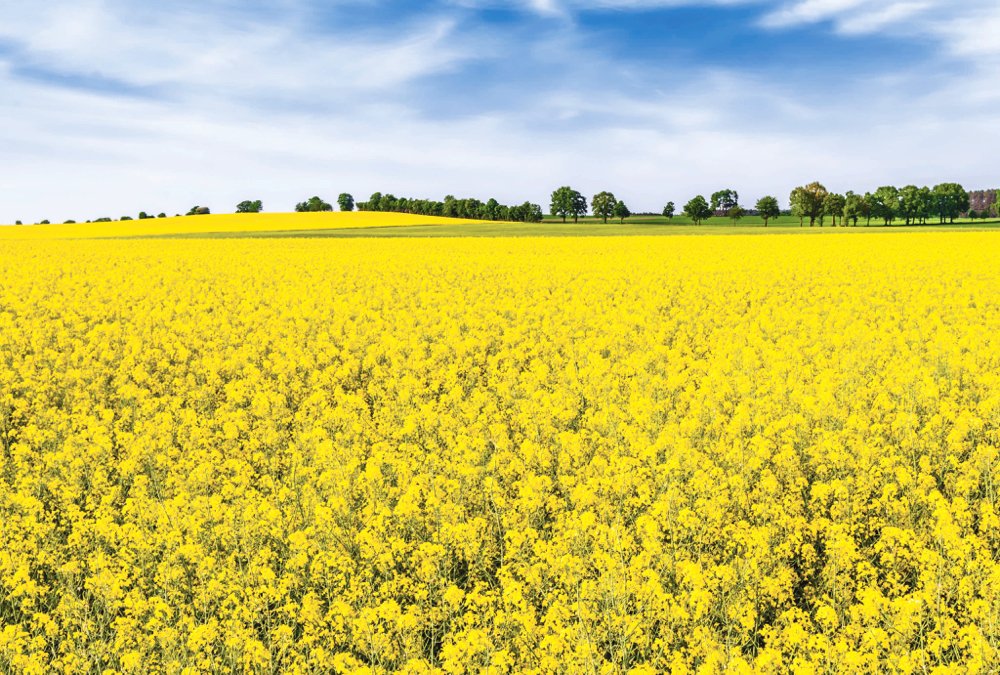A prolonged hot and dry spell has withered notions of a Prairie-wide bumper crop.
MarketsFarm analyst Bruce Burnett was forecasting a “close-to-record” crop after wrapping up a 3,500-kilometre, five-day crop tour in mid-July.
He doesn’t feel that way anymore after nearly three weeks of hot and dry weather.
“There’s probably not going to be bumper production this year,” he said.
“We’re no longer at record yields.”
He has dropped his average canola yield by two bushels to 40 bu. per acre and his spring wheat yield by three bushels to 54 bu. per acre.
That shaved one million tonnes of production off each crop with canola now pegged at 19.5 million tonnes and spring wheat at 26.8 million tonnes.
It’s a similar story for the other grains, oilseeds, pulses and special crops grown on the Prairies. Early-seeded crops handled the heat well, but late-planted crops are “suffering tremendously.”
The bulk of the Prairie region received less than 40 per cent of normal precipitation in July, while temperatures were 2 to 3 C above normal for most of the grain growing regions of Alberta.
“It’s almost like it has been a flash drought on the Prairies,” he said.
But overall, the crops still look better than they did the past couple of years despite the “missed potential.”
“I don’t want to give the impression that it’s not a good crop, because it will be a decent crop year,” said Burnett.
Yields will likely end up a little bit above average, although he noted they may continue to deteriorate if it continues to be dry through August.
Brian Allison, who runs a mixed operation near Red Deer, Alta., said the growing season started out full of promise.
His farm received more than 89 millimetres of rain in May.
“We had really good moisture for germination,” said Allison.
“We were fairly optimistic.”
However, the rain dried up until he got 32 mm June 27 and another 25 mm on half of his 2,000 acres of cropland toward the end of July.
In total, he estimates his farm received 133 to 165 mm of rain between May 1 and July 31, which is about half of what he would get in a decent year.
“Pastures are basically drying up. I had to spray grasshoppers on two of my three pastures here three days ago,” said Allison.
Everybody’s wheat in the surrounding area turned during the past week.
“It’s prematurely ripening. The top third of the heads in a lot of the crops aren’t filling,” he said.
Allison’s canola was not in bloom very long this year. He thinks the yield will be disappointing after showing much promise earlier in the growing season.
“The way it was originally coming up, we would have had a chance at 55 or 60 bu.,” he said.
“I think we’ll be lucky to get 35 now.”
The wheat will probably yield 50 to 55 bu. compared to 85 last year.
Allison just cut a field of silage that produced five tonnes per acre. The same field delivered double that last year.
Crops between Stettler and Red Deer are all going backward.
“This is a big central Alberta issue for sure. It’s not just me,” said Allison.
The one exception is the stretch between Veteran and Consort, which is historically a dry area. The crops look decent there.
However, his son just returned from a trip that took him 1.5 hours north of Edmonton, and he only saw one canola crop better than theirs.
“There’s no bumper crop in Alberta,” said Allison.
That dire assessment is corroborated in the July 23 provincial crop report.
“The recent heat was prolonged enough that major crop conditions significantly declined from 73 per cent good to excellent last week to 55 per cent good to excellent,” stated the report.
Conditions are now rated below the five- and 10-year averages of 57 and 62 per cent good to excellent.
Saskatchewan’s latest crop report contained more bad news.
“Crops throughout many regions are stressed, causing yield potential to further decline this week,” stated the report dated Aug. 1.
“Producers are hoping for moisture to help with head and pod filling on later seeded crops, but for many advanced crops, any moisture received would have little impact on yield at this stage.”
Allison said if rain comes in early August, his canola could gain another 10 bu. per acre and some of his later-seeded wheat and barley would benefit as well.
“But I don’t see anything in the forecast,” he said.
He is thankful for what he has in the fields, but the yields will likely end up 30 to 40 per cent lower than last year, while grain prices are down 25 to 30 percent.
“We’re definitely not going to have the same cash flow we had last year,” said Allison.
Fortunately, his fertilizer bill was 30 to 40 per cent lower than last year, and his glyphosate costs came down a lot as well.




